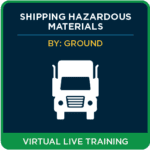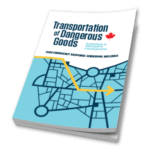
TSB Watchlist Reveals Deadly Risks
On October 15, 2025, the Transportation Safety Board of Canada has once again sounded the alarm. The TSB released its latest Watchlist. The 2025 list highlights seven long-standing systemic problems and one emergency safety issue that continues to put people, property, and the environment at serious risk.
The Watchlist isn’t new—it was established in 2010 to focus national attention on preventable accidents. But despite years of warnings and numerous recommendations, the TSB’s message remains stark. “These are complex and long-standing issues, but they are not unsolvable. Real progress requires leadership, accountability, concerted efforts, and sustained action by both industry and regulators.”
7 Critical Safety Issues That Need Urgent Action
- Commercial Fishing Safety – Commercial fishing remains one of Canada’s most dangerous occupations. The TSB has made 55 recommendations on vessel safety alone, but measurable safety gains have yet to be shown. While regulations like the Fishing Vessel Safety Regulations are in place, many fishermen still lack knowledge of specific requirements, leaving them vulnerable to severe risk on the water.
- Runway Overruns – An average of nine runway overruns occur in Canada every year. Although Transport Canada (TC) updated its regulations in 2022, the TSB notes they still fall short of international safety standards
- Risk of Collisions from runway Incursions: The number of runway incursions—where an aircraft, vehicle, or person is on a runway when it shouldn’t be—has risen significantly, from 539 in 2018 to 639 in 2024. Reducing the risk of a catastrophic collision requires a multi-pronged approach:
- Enhanced Airport Defenses: Implementing better signage, lighting, and active, local safety teams.
- Adoption of Technology: Widening the use of tools that give pilots and ground crews better situational awareness and timely alerts
- Not Following Signal Indications: Crew members not consistently following signal indications can lead to devastating collisions and derailments. Preventing this requires crews to be fully trained and held accountable for following safety protocols. One notable incident that involved crews failing to obey signal indications was seen in the 1999 VIA Rail Trenton Junction derailment where Train No. 52 passed through a stop signal and derailed. The danger of not following signal indications was also tragically demonstrated in 2012 in Madison, Illinois, when northbound Amtrak train #301-28 collided with a vehicle, causing a US railway disaster.
- Fatigue managements – Fatigue is a universal danger in transportation, impacting human performance across all modes—air, rail, marine, and road
- Safety management: Many operators are still not required to have formal safety management processes. Many operators are still not required to have formal safety management processes (SMS). When an SMS is absent or ineffective, safeguards break down: hazards go unidentified, risks are mismanaged, and unsafe conditions are left to persist until a major accident occurs
- Regulatory Surveillance: The TSB is clear: Transport Canada’s surveillance is not always effective in detecting non-compliance.
A Call to Action for Your Transportation Team
For every company involved in the transportation supply chain, the TSB’s Watchlist is a direct call to action. You have a critical role to play in closing these safety gaps.
Ensure your team is properly trained on the requirements in their specific sector. If their roles require specialized training—such as TDG, DOT, IMDG, or IATA training—ensure they receive it. A well-trained employee is equipped to assess risk, identify hazards quickly, and take the necessary steps to rectify unsafe situations before an accident occurs.
If you have questions regarding transportation regulations or need support in bringing your team up to date, you can contact ICC Compliance Center:
- 1-888-442-9628 (U.S.)
- 1-888-977-4834 (Canada)
ICC can help train your company using various methods, including flexible online training, live training at your facility, or virtual live training options.
Stay up to date and sign up for our newsletter!
We have all the products, services and training you need to ensure your staff is properly trained and informed.
 Shipping Hazmat by Ground Shipping Hazmat by GroundTraining |
 TDG Publications TDG Publications |
 4GV UN Variation 4GV UN Variation |






 ICC USA
ICC USA ICC Canada
ICC Canada